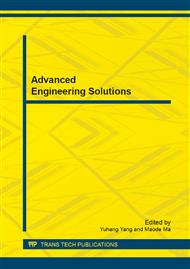p.620
p.625
p.630
p.635
p.639
p.644
p.648
p.653
p.659
Simulation Model Design on AC Speed Regulation System Based on the Principle of Flux Regulation
Abstract:
In human life signs, there are many cycle characteristics or similar cycles which change with external input stimulating factors based on the body's own feedback mechanism and influence. Based on alternating current characteristics and the rhythm of human body signal characteristics, according to the AC speed control system we design the simulation of model, and analyze the flux regulation principle. On the basis we construct acquisition and analysis system of the psychological factors and prediction model based on VR. We use MATLAB7.0Simulink software to simulate biological stimuli and obtain psychological change under different conditions. After the model specification, the results show that the model can make a scientific prediction of the psychological changes in a certain extent, with strong practicability. It can provide sufficient basis for regulation in psychological intervention.
Info:
Periodical:
Pages:
639-643
Citation:
Online since:
July 2014
Authors:
Keywords:
Price:
Сopyright:
© 2014 Trans Tech Publications Ltd. All Rights Reserved
Share:
Citation:


